I have not found any suitable way to show query plan other than image, so i added image. in image i got the execution plan and i want to reduce fullouter join cost
, if any one suggest me the way of reducing cost it would be great for better query plan link
WITH cte AS
(
SELECT
coalesce(fact_connect_hours.dimProviderId,fact_connect_hour_hum_shifts.dimProviderId,fact_connect_hour_clock_times.dimProviderId)
as dimProviderId,
coalesce(fact_connect_hours.dimScribeId,fact_connect_hour_hum_shifts.dimScribeId,fact_connect_hour_clock_times.dimScribeId)
as dimScribeId
,coalesce(fact_connect_hours.dimDateId,fact_connect_hour_hum_shifts.dimDateId,fact_connect_hour_clock_times.dimDateId)
as dimDateId
,factConnectHourId
,totalProviderLogTime
,providerFirstJoinTime
,providerLastEndTime
,scribeFirstLogin
,scribeLastLogout
,totalScribeLogTime
, totalScopeTime
, totalStreamTime
, firstScopeJoinTime
, lastScopeEndTime
, scopeLastActivityTime
, firstStreamJoinTime
, lastStreamEndTime
, streamLastActivityTime
,fact_connect_hour_hum_shifts.shiftStartTime
,fact_connect_hour_hum_shifts.shiftEndTime
,fact_connect_hour_hum_shifts.totalShiftTime
,fact_connect_hour_clock_times.ClockStartTimestamp
,fact_connect_hour_clock_times.ClockEndTimestamp
,fact_connect_hour_clock_times.totalClockTime
,fact_connect_hour_hum_shifts.shiftTitle
,fact_connect_hours.dimStatusId
,dim_status.status
FROM fact_connect_hours
INNER JOIN dim_status on fact_connect_hours.dimStatusId=dim_status.dimStatusId
full outer JOIN fact_connect_hour_hum_shifts
ON ( fact_connect_hour_hum_shifts.dimDateId=fact_connect_hours.dimDateId
and fact_connect_hour_hum_shifts.dimProviderId=fact_connect_hours.dimProviderId
and fact_connect_hour_hum_shifts.dimScribeId=fact_connect_hours.dimScribeId)
full outer join fact_connect_hour_clock_times
on (fact_connect_hours.dimDateId = fact_connect_hour_clock_times.dimDateId
and fact_connect_hours.dimProviderId= fact_connect_hour_clock_times.dimProviderId
and fact_connect_hours.dimScribeId = fact_connect_hour_clock_times.dimScribeId
)
WHERE coalesce(fact_connect_hours.dimDateId,fact_connect_hour_hum_shifts.dimDateId,fact_connect_hour_clock_times.dimDateId)>=732
) SELECT cte.*
,dim_date.tranDate
,dim_date.tranMonth
,dim_date.tranMonthName
,dim_date.tranYear
,dim_date.tranWeek
,dim_scribe.scribeUId
,dim_scribe.scribeFirstname
,dim_scribe.scribeFullname
,dim_scribe.scribeLastname
,dim_scribe.location
,dim_scribe.partner
,dim_scribe.beta
,dim_scribe.currentStatus
,dim_scribe.scribeEmail
,dim_scribe.augmedixEmail
,dim_scribe.partner
,dim_provider.scribeManager
,dim_provider.clinicalAccountManagerName
,dim_provider.providerUId
,dim_provider.beta
,dim_provider.accountName
,dim_provider.accountGroup
,dim_provider.accountType
,dim_provider.goLiveDate
,dim_provider.siteName
,dim_provider.churnDate
,dim_provider.providerFullname
,dim_provider.providerEmail
from cte
INNER JOIN dim_date on cte.dimDateId=dim_date.dimDateId
inner JOIN aug_bi_dw.dbo.dim_provider AS dim_provider on cte.dimProviderId=dim_provider.dimProviderId
inner join aug_bi_dw.dbo.dim_scribe AS dim_scribe on cte.dimScribeId=dim_scribe.dimScribeId
where dim_date.dimDateId>=732
